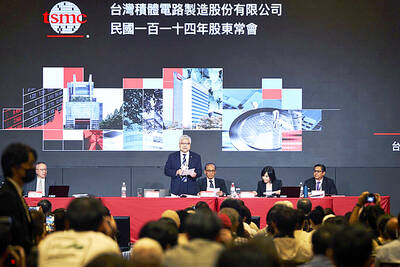The Indian government is pushing to get the initial public offering (IPO) of state-backed Life Insurance Corp of India (LIC) across the line by March next year, and any delay would not be due to a lack of political will, Indian Minister of Finance Nirmala Sitharaman said on Sunday.
“We are pushing to have it done,” Sitharaman in an interview in New York. “The problem is not that we don’t want it or we are pussyfooting on it now, it is more a question of doing the due process.”
The internal valuation that is needed “almost annually” for a company of LIC’s size, “hasn’t been done,” Sitharaman said.
As the 65-year old insurer has not ever been valued, the process would take time, she said.
“So the delay or the time that is being consumed is not due to the lack of political will to go ahead with the stated policy,” Sitharaman said.
She announced plans to sell shares in the insurer in February last year, but the COVID-19 pandemic slowed the process.
The minister revived the offering in February this year, but the valuation report, which is key for investors and bankers, has yet to be finalized. The government has appointed bankers and legal advisers for the sale and held meetings with stakeholders.
Valuing the giant insurer that holds more than US$511 billion in assets — equivalent to the size of India’s mutual fund industry — and controls two-thirds of the nation’s market, has been going on for months.
The government is seeking to raise as much as 10 trillion rupees (US$132.76 billion) by selling up to a 10 percent stake. The sale of a 5 percent stake would make it India’s largest IPO, while a 10 percent dilution would make it the second-biggest of an insurer globally.
“I can’t go to the market without doing my own internal valuation,” Sitharaman said. “I will have to go through the necessary and due path before I go to the market and say: ‘Yes, I am fulfilling my commitment.’”
The IPO is crucial for the government because it would make up the bulk of its plans to raise 1.75 trillion rupees through asset sales this fiscal year.
Meanwhile, India is in no hurry to withdraw the pandemic-era stimulus and is ready to do more if required to support the nation’s economic recovery, Sitharaman said.
“They will continue,” she said, referring to fiscal measures to counter the effects of the COVID-19 outbreak.
“The emphasis on building health infrastructure will continue,” and so would government spending on capital expenditure and infrastructure, she said.
Sitharaman, who is due to present India’s annual budget on Feb. 1, echoed Reserve Bank of India Governor Shaktikanta Das’ sentiment on the need to keep policy easy as the economy makes its way out of the pandemic.
The central bank, as well as the IMF, expect the nation’s GDP to grow 9.5 percent in the year to March — the quickest pace among major economies — after contracting 7.3 percent last year.

With an approval rating of just two percent, Peruvian President Dina Boluarte might be the world’s most unpopular leader, according to pollsters. Protests greeted her rise to power 29 months ago, and have marked her entire term — joined by assorted scandals, investigations, controversies and a surge in gang violence. The 63-year-old is the target of a dozen probes, including for her alleged failure to declare gifts of luxury jewels and watches, a scandal inevitably dubbed “Rolexgate.” She is also under the microscope for a two-week undeclared absence for nose surgery — which she insists was medical, not cosmetic — and is

CAUTIOUS RECOVERY: While the manufacturing sector returned to growth amid the US-China trade truce, firms remain wary as uncertainty clouds the outlook, the CIER said The local manufacturing sector returned to expansion last month, as the official purchasing managers’ index (PMI) rose 2.1 points to 51.0, driven by a temporary easing in US-China trade tensions, the Chung-Hua Institution for Economic Research (CIER, 中華經濟研究院) said yesterday. The PMI gauges the health of the manufacturing industry, with readings above 50 indicating expansion and those below 50 signaling contraction. “Firms are not as pessimistic as they were in April, but they remain far from optimistic,” CIER president Lien Hsien-ming (連賢明) said at a news conference. The full impact of US tariff decisions is unlikely to become clear until later this month

GROWING CONCERN: Some senior Trump administration officials opposed the UAE expansion over fears that another TSMC project could jeopardize its US investment Taiwan Semiconductor Manufacturing Co (TSMC, 台積電) is evaluating building an advanced production facility in the United Arab Emirates (UAE) and has discussed the possibility with officials in US President Donald Trump’s administration, people familiar with the matter said, in a potentially major bet on the Middle East that would only come to fruition with Washington’s approval. The company has had multiple meetings in the past few months with US Special Envoy to the Middle East Steve Witkoff and officials from MGX, an influential investment vehicle overseen by the UAE president’s brother, the people said. The conversations are a continuation of talks that

CHIP DUTIES: TSMC said it voiced its concerns to Washington about tariffs, telling the US commerce department that it wants ‘fair treatment’ to protect its competitiveness Taiwan Semiconductor Manufacturing Co (TSMC, 台積電) yesterday reiterated robust business prospects for this year as strong artificial intelligence (AI) chip demand from Nvidia Corp and other customers would absorb the impacts of US tariffs. “The impact of tariffs would be indirect, as the custom tax is the importers’ responsibility, not the exporters,” TSMC chairman and chief executive officer C.C. Wei (魏哲家) said at the chipmaker’s annual shareholders’ meeting in Hsinchu City. TSMC’s business could be affected if people become reluctant to buy electronics due to inflated prices, Wei said. In addition, the chipmaker has voiced its concern to the US Department of Commerce